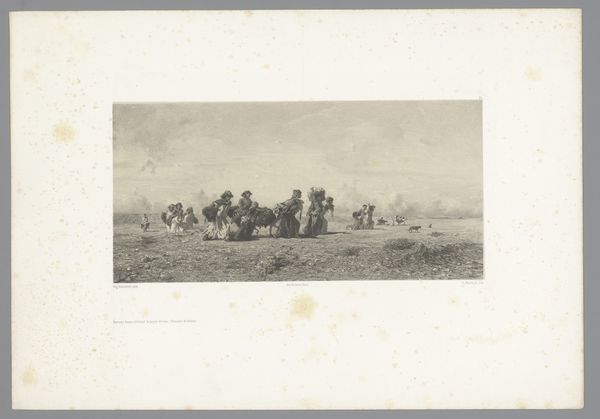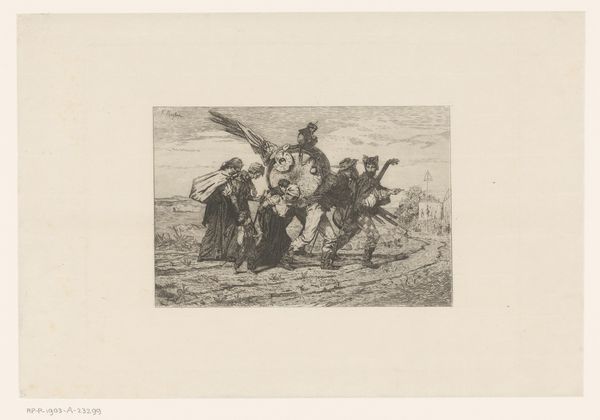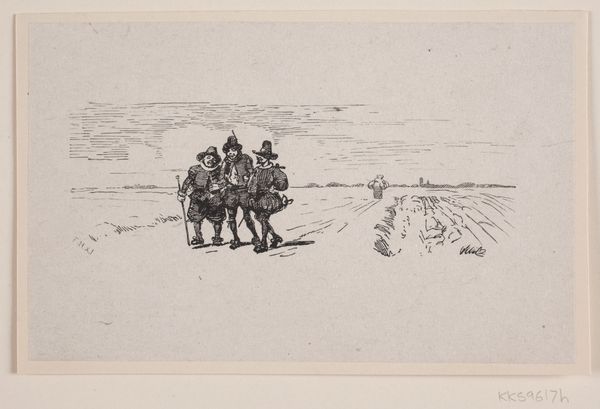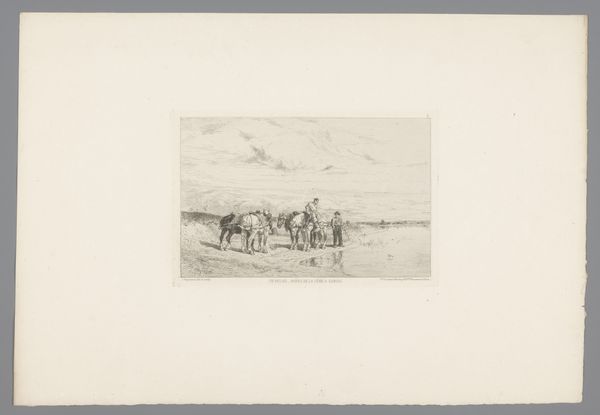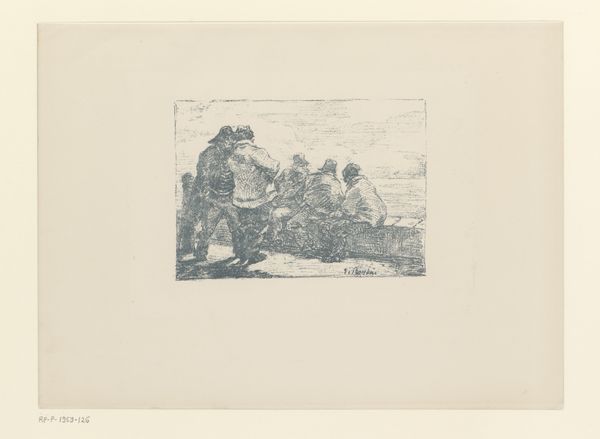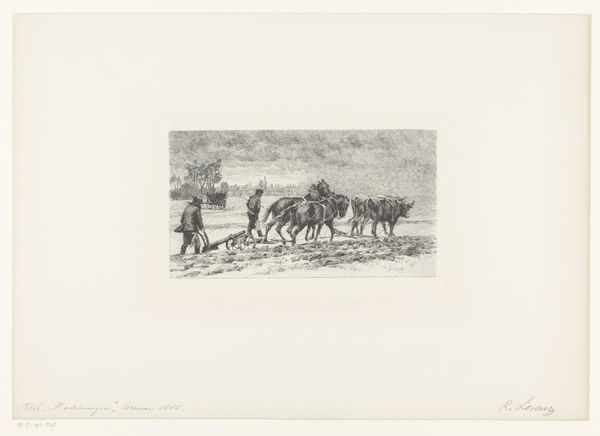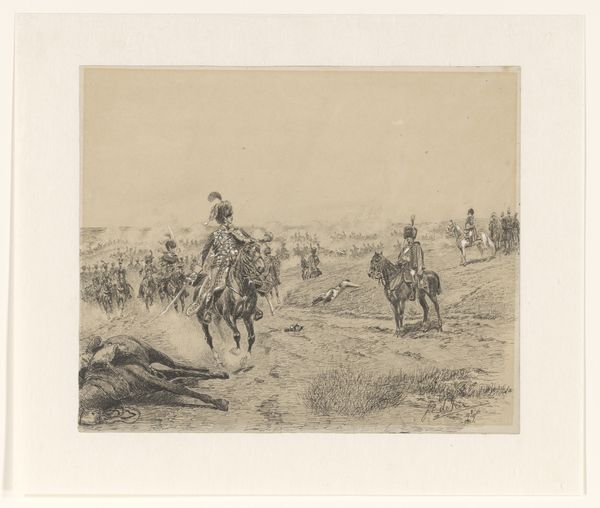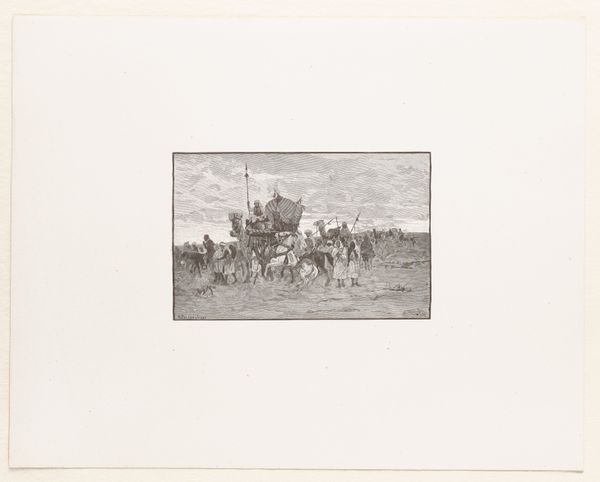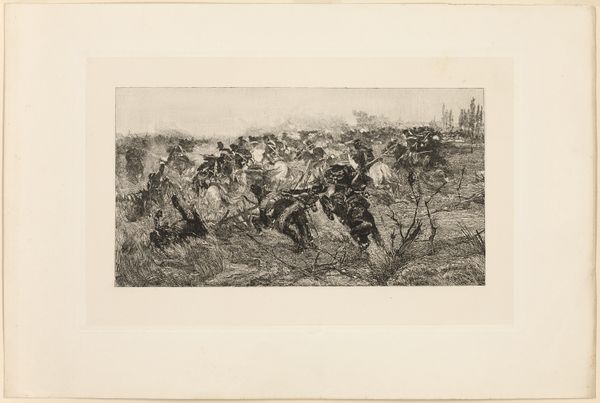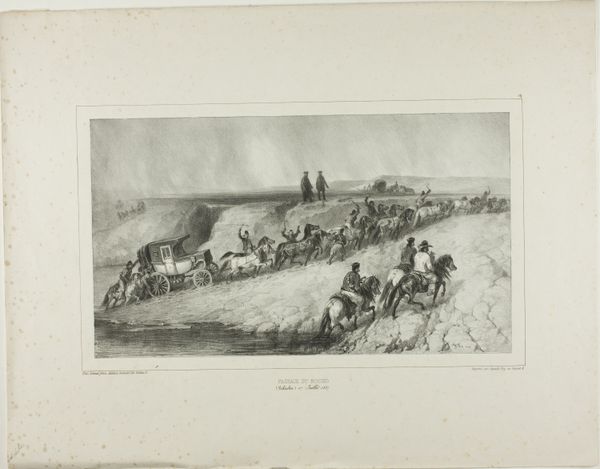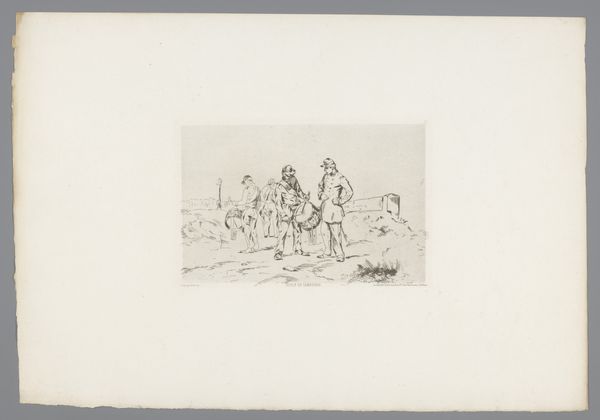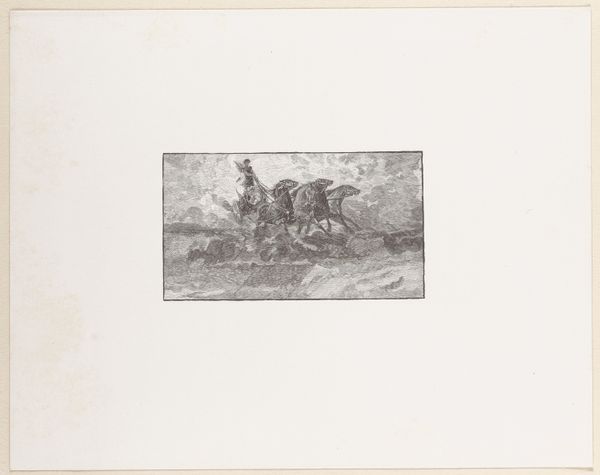
drawing, print, etching, pencil
#
pencil drawn
#
drawing
# print
#
etching
#
pencil sketch
#
landscape
#
pencil
#
pencil work
#
genre-painting
#
academic-art
#
realism
Dimensions: height 160 mm, width 238 mm
Copyright: Rijks Museum: Open Domain
Curator: Well, that’s rather bleak, isn’t it? Kind of makes you want to pull up a chair next to the fire… if there was one nearby, of course. Editor: Yes, there is a distinct somberness, wouldn't you say? We're looking at a print from 1867 titled “Groep reizigers in en om een wagen nadert een ommuurde stad,” depicting travelers approaching a walled city. It was created using etching and pencil by Alfred Hubert. The materiality of etching and pencil evokes this sense of faded time, lost to memory... Curator: Faded time, exactly! The way the light catches (or, well, doesn’t really catch) and reflects from the slick ground gives the impression of weary journey. It almost feels more like an end than a beginning. Editor: Precisely. I think it also offers insight into 19th-century social conditions. The group, their laden wagon...they're likely not traveling for leisure. Is it migration? Economic displacement? The inscription along the bottom suggests something particular about ethnic tensions— "Flemands et Wallons nous chassent," which I believe translates to something about being chased by Flemings and Walloons... It adds another layer of political and social context. Curator: Oh, now that’s a grim subtitle to a bleak landscape. So, it’s not just weary travelers, but weary, displaced people… Suddenly that walled city looks more like a refuge than a destination. You know, it does add a tension... a bit of human drama into an otherwise… quiet work. I almost wish there were more… resistance, perhaps? Editor: But that muted tone serves to illustrate how institutional power renders individuals and even whole groups invisible and without agency. Their very lack of visual assertiveness *is* the point. Their suffering made banal is rendered almost ghostly in this rendering. I think this work speaks volumes about that very delicate subject... Curator: So it does... almost whispering its criticisms across time, demanding consideration in a different, perhaps quieter voice. Editor: Ultimately, what endures, isn’t it? The visual echo of their plight keeps asking us to consider and learn...and how its historical nuances remain very alive today.
Comments
No comments
Be the first to comment and join the conversation on the ultimate creative platform.

